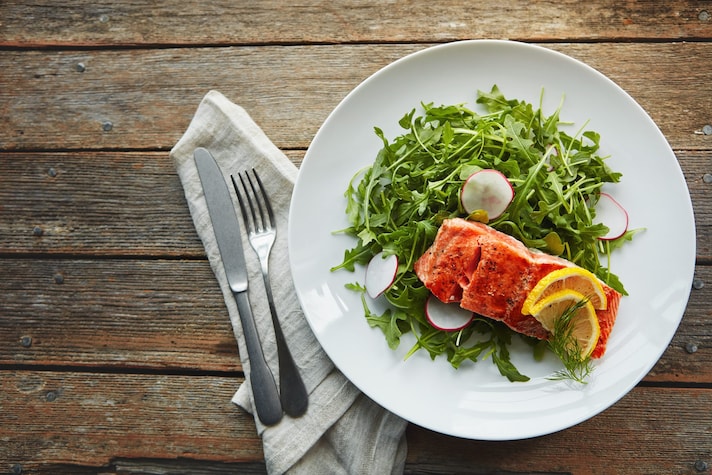11 Things that Makes up a Healthy Diet and Lifestyle
With all the conflicting advice you get these days about healthy eating and living, it’s too easy to forget the central, very simple message for a healthy diet and lifestyle: Eat less, move more, eat plenty of fruits, vegetables and whole grains, and avoid too much junk food.
;)
With all the conflicting advice you get these days about healthy eating and living, it’s too easy to forget the central, very simple message for a healthy diet and lifestyle: Eat less, move more, eat plenty of fruits, vegetables and whole grains, and avoid too much junk food.
So why do many of us fail to do that if it’s so simple?
The answer is two-fold:
• We focus on the ‘bad’ foods. During the last three decades, scientists and health organizations have been telling us what is good and bad for us to eat, with an emphasis on what not to eat.
Not that long ago, all fats were considered bad, then carbs were to blame, then eggs were full of cholesterol and should be avoided. The ‘bad’ foods kept changing, and calories were at the top of everyone’s minds. We concentrated so much on avoiding the bad, that we forgot to think about what we should be eating instead! Research shows that what we don’t eat may impact our health more negatively than eating ‘bad’ foods.
• We don’t act on what we know. Nowadays, we all know we should eat fruits, veg, and whole grains, but we still don’t do it. In 1991, Johns Hopkins studied a national fruit and vegetable campaign, and they found that American fruit and veg consumption had not increased in spite of the campaign. Only around 10 percent ate the recommended five a day of fruits and vegetables, and a whopping 50 percent did not eat any vegetables! Those who were surveyed considered themselves well clued-up on nutrition.
What Can We do About it?
You need to stop and think about the food you are going to buy and eat. Will it send good or bad signals to your body? Will the food create and nurture health, or contribute to the appearance of dysfunction, symptoms and disease?
1. Eat Natural foods

The first thing that you can do right now, is to make the decision to include foods that are natural and whole, and to avoid foods that have been processed. The other key points to motivate you to make a dietary change are below.
2. Eat a Variety of Foods

Studies show that those who eat a variety of food live longer, are healthier, and have a reduced risk of diseases like heart disease, cancer and diabetes.
Variety means choosing foods such as fruit, vegetables, whole grains, meat, fish, seafood, nuts, seeds, and legumes. Each category often has subcategories, such as whole grains – these can be whole wheat, wild rice, oats, rye, or barley.
Eating a wide variety of foods means that you’ll get a variety of nutrients. You’ll include protein, fats, carbohydrates, vitamins, minerals, phytonutrients and fiber in your diet.
The food pyramid has been replaced by the ‘choose my plate’ graphic instead. It recommends dividing your plate into four quadrants, with fruit and veg taking up half of the plate. Proteins and grains should take up the other half.
3. Increase Your Intake of Fruits and Vegetables

There’s a lot of scientific data on the health benefits of fruit and vegetables, and some of the data shows they help in preventing a variety of diseases.
The majority of us just aren’t eating enough fruit and vegetables. The 2005 Dietary Guidelines for Americans from the USDA Center for Nutrition Policy and Promotion, recommends we should be eating a whopping five to thirteen servings of fruit and veg in a single day! A serving is one piece of fruit, ½ cup of vegetables, 1 cup of salad greens or ½ cup of juice.
We should also be choosing different colors of fruit and veggies, as the colors indicate different phytonutrients. These phytonutrients can help our bodies defend against disease and illness.
Fruits and vegetables also contain fiber to help fill you up and they are generally low in calories. Try to buy locally grown fruits and veg if possible, as they will have the highest levels of phytonutrients due to being picked when ripe.
4. Don’t Forget the Good Fats

It’s not the fat itself that is bad for us, but rather the type and quality of the fat that is commonly eaten. There are two types of fatty acids our bodies need – omega 3 and omega 6, but we need much less of omega 6 fatty acids.
• Omega 3: This is found in plant oils, such as avocado, olive oil, canola oil, flaxseed oil, nut and seed oils, and omega 3 rich fish such as salmon or mackerel. These fatty acids have an anti-inflammatory effect on the body.
• Omega 6: These are animal fats, butter fats, and corn oil. They contain a lot of omega 6 fatty acids, and can produce inflammation in the body.
Studies have shown that the American diet tends to be deficient in omega 3 fats, and excessive in omega 6 fats. Corn oil and grain instead of grass-fed beef are contributing to the problem.
5. Try Whole Grains

The Nurse’s Health Study showed that whole grains reduce the risk of diabetes and heart disease, and improve gastrointestinal health. Whole grains contain lots of nutrients, but when whole grains are processed, a huge amount of nutrient content is lost, including up to 95 percent fiber and 75 percent vitamins.
Manufacturers then have to fortify these stripped and processed foods with B-vitamins and iron, but they cannot replace the fiber they have removed. Fiber makes us feel fuller for longer, so it can help curb overeating, and it can help slow the rise is blood sugar glucose.
6. Keep Hydrated With Water

Our bodies are made up of mostly water, and our brain is composed of 70 percent water, with the lungs being 90 percent water.
We need water for digestion, absorption and transportation of nutrients. Water helps our skin stay soft and smooth, reduces toxicity and flushes excess salt from our bodies. It also helps regulate body temperature and manage hunger.
When we lose only five to ten percent of our bodies’ water, this can lead to dehydration. When we are dehydrated, the body is unable to cool itself, and it increases the tendency of the blood to clot. Men should consume around three liters of water a day, and women 2.2 liters.
Eighty percent of our liquid intake should come from drinking water and other beverages, but not soda, coffee or alcohol. The rest should come from foods, especially fruit and vegetables, which are contain a lot of water.
7. Drink Green Tea

Studies have shown an association between the consumption of green tea and cancer protection – including breast cancer, colon cancer, and esophageal cancer.
Green tea contains antioxidants and polyphenols called catechins, which give green tea its health benefits. Green tea and green tea extracts have also been used to improve mental alertness, protecting skin from sun damage, and lowering cholesterol.
The recommended intake of green tea is two to three cups a day. It’s best not to use boiling hot water to make the tea, or it will give a bitter tasting drink.
8. Portion Control

We can eat lots of healthy things, but if we overindulge in them, we’ll gain weight. Here are some tips to help avoid overeating:
• Keeping a food diary helps. Note what, when and why you eat, and see if you can see patterns forming.
• Are you hungry or thirsty? Sometimes it’s easy to confuse the two feelings.
• Don’t eat while standing up, driving or watching TV.
• Eat slowly and chew your food.
• Eat smaller, more frequent meals, and don’t skip meals or wait too long to eat. This can cause you to eat bigger portions when you do finally eat.
• Use smaller plates: we often use visual cues to tell us when to stop eating, such as when the plate is empty.
• Don’t overestimate serving sizes: one serving of meat, fish or poultry is the size of a deck of playing cards, for potatoes, rice or pasta, you should aim for a serving the size of a tennis ball. A one-ounce serving of cheese is about the size of your thumb, and a portion of fruits and veg is about the size of a small fist.
9. Try to Avoid Trans-Fatty Acids

Trans fats are man-made, created by adding hydrogen to vegetable oil. This process is called hydrogenation, and manufacturers like it because it increases the shelf-life and stability of foods.
Hydrogenation alters the chemistry of the vegetable oil, and this affects the way our bodies deal with it, and trans fats can affect the function and responses of many cell types.
10. Don’t Eat Corn Syrup or Other Artificial Sweeteners

The consumption of high fructose corn syrup (HFCS) increased more than 1,000 percent between 1970 and 1990, and there is new evidence to show that corn syrup has negative impacts on health.
Soft drinks that are sweetened with HFCS may cause diabetes, especially in children, a 2007 study found. HFCS has also been linked with obesity, due to the way our bodies deal with it. When we eat ordinary sugar, the body produces a hormone called leptin, which tells the brain that the body is full, and stops us eating. When we eat HFCS, our bodies don’t produce leptin, and therefore we don’t stop eating when full.
Avoiding or limiting soft drinks is best, including diet varieties. There is some controversy about artificial sweeteners being damaging for health too.
11. Don’t eat Much Processed Food

Processed foods may be convenient, but they are full of artificial flavorings, additives and trans fats. They may also be high in salt and sugar, too, or contain high fructose corn syrup. The best way to avoid processed foods is to shop at a local farmer’s market; other options are food co-ops, natural food stores or farm shares.
;Resize,width=767;)
;Resize,width=712;)
;Resize,width=712;)
;Resize,width=712;)
